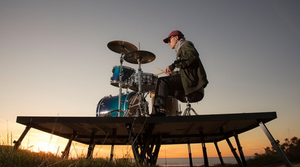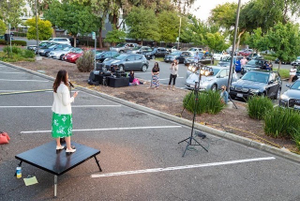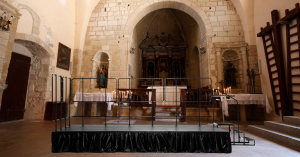
Introduction
Setting up a portable stage is more than just creating a performance space; it’s about ensuring safety for everyone involved. Whether you're hosting a concert, a speech, or a community event, following a portable stage safety guide is crucial. This article will walk you through essential safety tips, the five factors to choosing the right portable stage, the benefits of portable stages and regular maintenance, and help you manage your events smoothly and safely. Let’s dive into making your next event spectacular and secure.
Factors to Consider When Choosing a Portable Stage
Choosing the right portable stage involves more than just considering the size and price. Start by thinking about the specific needs of your event. What type of performances or activities will take place? This determines the required size and strength of the stage. Next, consider the venue's surface and environment—will you need a modular stage platform that can adjust to uneven ground? Also, assess the ease of assembly and disassembly, as quick setup and breakdown are crucial for event efficiency. Lastly, safety features such as stage railings and non-slip surfaces are paramount to ensure performer and audience safety. Remember, the proper portable stage blends functionality, safety, and convenience, setting the stage for a successful event.
Step-by-Step Guide on Safe Assembly
Ensuring the safety of your portable stage begins with proper assembly. Start by reviewing the manufacturer's instructions carefully—never assume the setup for all stages is the same. First, inspect all components, like the 4x4 stage deck and connectors, for any damage before assembly. Lay out all parts systematically to ensure easy access and assembly efficiency. When constructing the stage, always work in teams to help manage the heavier pieces safely. Secure each section meticulously, double-checking that all locking mechanisms are fully engaged. Before declaring the stage ready for use, perform a thorough check to ensure stability and levelness, adjusting as necessary to avoid potential hazards during the event.
Understanding and Applying Load Limits
When using portable stages, respecting load limits is crucial for safety. Always check the maximum weight capacity specified by the manufacturer and plan accordingly. Distribute weight evenly across the stage to prevent overloading specific areas, which can lead to structural failures. Consider reinforcing these areas for events involving heavy equipment like drum risers or camera risers to handle the additional weight safely. Understanding and adhering to these guidelines ensures the safety of performers and equipment and extends the stage's lifespan.
Techniques to Secure the Stage
Proper anchoring is essential to ensure your portable stage remains stable and secure throughout your event. Begin by selecting the anchoring systems suited to the ground surface, whether indoors on solid floors or outdoors on grass. Use heavy-duty anchoring devices such as ground stakes or weight bags to combat wind and other elements for outdoor events. Ensure that non-slip pads are under each stage leg for indoor setups to prevent shifting. Regularly check the stability of the stage once it's anchored, especially if the event involves a lot of movement or equipment changes.

Safety Tips for Performers Using the Stage
Performers must prioritize safety while using a portable stage. Always install stage railings, especially if the performance involves dynamic movements or multiple performers. Keep the stage surface clear of any unnecessary objects that could cause trips or falls. Before any performance, conduct a quick walk-through to familiarize yourself with the stage layout and identify any potential hazards. Additionally, wearing appropriate footwear can significantly reduce the risk of slipping, helping performers maintain their balance and safety during the show.
Checklist for Ongoing Stage Care
Regular maintenance and inspections are crucial for the longevity and safety of your portable stage. Develop a routine checklist that includes checking all connections and fittings for tightness, inspecting for any signs of wear or damage like cracks or rust, and ensuring all moving parts function smoothly. Clean the stage surfaces regularly to prevent buildup that could make them slippery. Additionally, store all components properly to avoid unexpected deterioration. Consistent upkeep extends the stage's life and ensures it remains safe for every performance.
Adapting Stage Setup for Weather Conditions
When setting up a stage outdoors, always plan for the weather. Use weather-resistant materials and coverings to protect the stage and equipment from rain or excessive sun. If you expect windy conditions, enhance the stage’s stability with additional anchoring and weight distribution strategies. Always plan to quickly dismantle or secure the stage if the weather unexpectedly turns severe. Being proactive with these preparations ensures the safety of both performers and equipment, allowing the event to proceed smoothly regardless of weather challenges.
Conclusion
Ensuring the safety of your portable stage setup is essential for any event. By selecting the right stage, carefully managing setup, distribution, and anchoring, and maintaining regular checks, you create a secure environment for all participants. Remember, safety isn’t just about following guidelines—it's about fostering a safe atmosphere where performances can thrive. Implement these tips to safeguard your events, enhance performance quality, and maintain the integrity of your portable staging investments. Always prioritize safety to ensure that every event is successful and incident-free.





